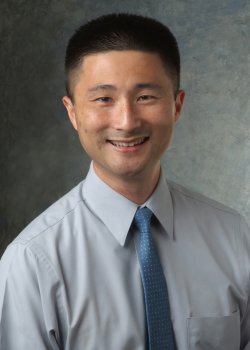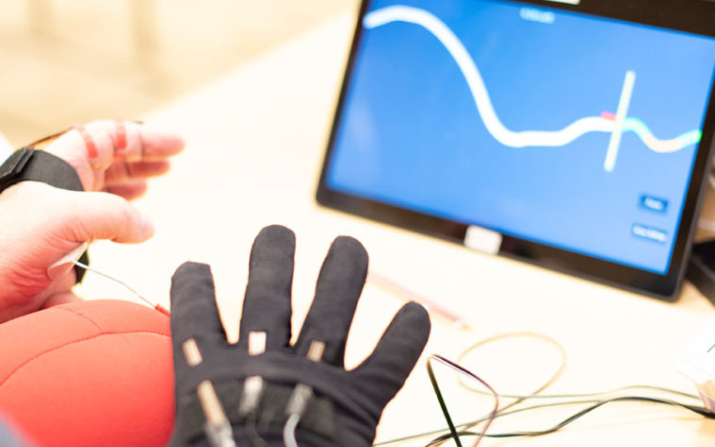
Researcher Michael Fu awarded NSF CAREER Award

Although Functional Electrical Stimulation (FES) devices have become commonplace in the last few decades, helping people recover muscle movement after a stroke, researchers still don’t know for certain when patients are actually trying to move the muscle, holding back—or even quitting entirely.
Knowing that could make FES even more effective, said Michael Fu, PhD, an assistant professor of Electrical, Computer and Systems Engineering at the Case School of Engineering, an assistant professor of Physical Medicine and Rehabilitation (PM&R) at the Case Western Reserve University School of Medicine and a staff scientist at The MetroHealth System.
The National Science Foundation agreed earlier this year, giving him a five-year, $549,000 National Science Foundation Early Career (CAREER) Award to continue research on specific FES questions through 2025.

What is ‘assistive FES’?
“Assistive FES has been around since the 1970s, but no one has ever really looked at this problem in terms of effort” said Fu, who does the bulk of his research in stroke rehabilitation at MetroHealth System, the institutional home of the department of PM&R at CWRU, and is also an investigator in the Louis Stokes Cleveland VA Medical Center’s Cleveland FES Center. “Mostly, we don’t have a real sense of whether the person is maintaining effort during FES.”
And that’s a problem, Fu said, because the brain learns best after stroke when a person actively tries to move the paretic limb—not when it is passively moved for the person, either by a therapist or an electrical pulse.
“So we’re trying to solve it by designing a device that will only help as needed—when the person with stroke is actually exerting effort,” Fu said. “In doing this, we’re trying to make an impact on something that’s widespread in many therapy clinics, but add some intelligence that will make it even better.”
To do that Fu and a research team are working on a control algorithm that measures muscle exertion amid the “noise” of the electrical stimulation being artificially applied to those muscles.
The idea is drawn from Fu’s previous research.
Fu had been awarded a $475,000 NIH grant four years ago to begin the work, focusing first on restoring hand function to children with Cerebral Palsy.
That same year, he had won a $15,000 privately-funded grant to help commercialize electrical-stimulation-assisted video game hand therapy—a treatment for children with hand disabilities due to cerebral palsy that he developed at MetroHealth Rehabilitation Institute with Jayme Knutson, PhD, associate professor of PM&R; and John Chae, MD, professor and chair of PM&R, and professor of Biomedical Engineering.
It also isn’t just a scientific endeavor for Fu.
“The reason I even got into this in the first place was that two of my grandparents had strokes and I saw the impact it had on my family,” he said. “It inspired me to think of ways to use my skills to contribute to the field of neurological rehabilitation.”
FES functions, but how well?
FES is the technology of applying artificial, low-level electrical impulses to the body’s peripheral nervous system to generate muscle contractions that would otherwise be activated by the brain region injured by stroke.
The result is assistance or restoration of some lost function of the muscles and limbs of a person who has had a stroke or a spinal cord injury. FES is also used in pain management.
Fu said there are actually a handful of related and very specific and scientifically vexing questions surrounding FES, also known as e-stim.
“How do you measure human effort during FES assistance? And do people slack off, and if so, how much and when?” he said. (Yes, slacking off has become the preferred scientific term, winning out over the more official sounding, but less accessible, reduced force output, mostly due to the nomenclature favored by a scientist who first researched a related topic.)
“The bottom line here is that people assume FES is effective because of the assistance it gives to the muscles during stroke rehabilitation. But that’s actually still really a theory. We want to see if FES as an assist as needed technology is even better, but right now that technology doesn’t yet exist.”
For more information, contact Mike Scott at mike.scott@case.edu
(From The Daily, 4/10/2020)
